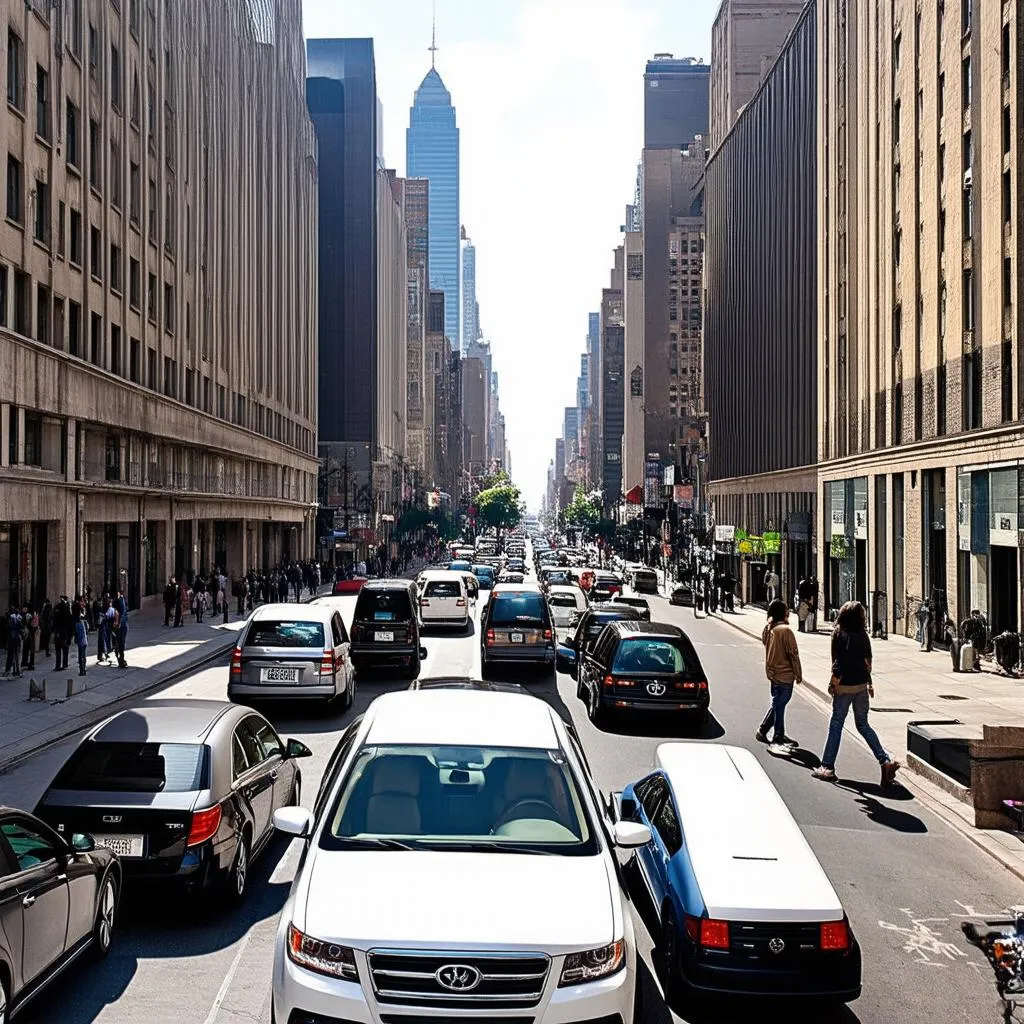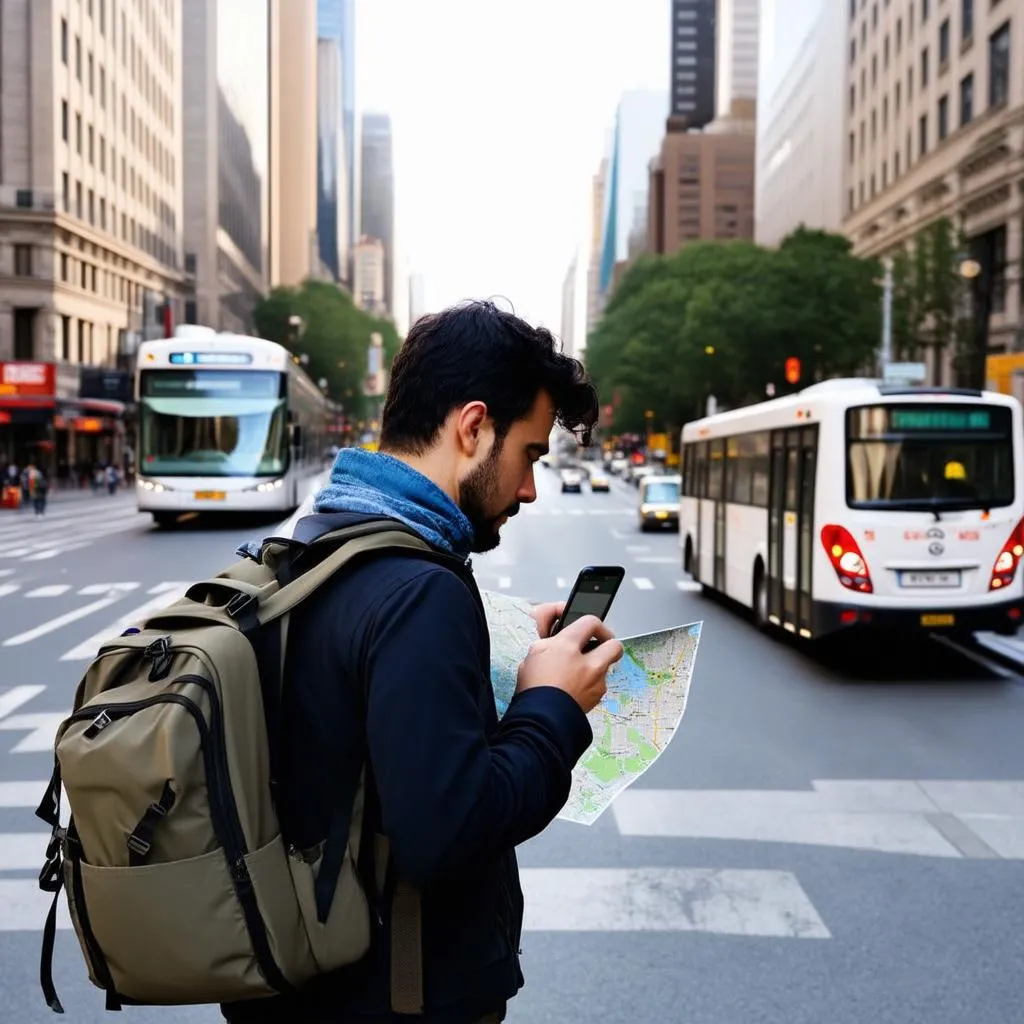Have you ever found yourself stuck in traffic on a seemingly simple drive down Main Street? Or wondered why some days your commute feels like a breeze, while others leave you pulling your hair out? It all boils down to the complex dance of travel time and reliability on arterial routes – those bustling city streets and suburban thoroughfares that form the backbone of our transportation systems.
Delving into the Heart of Arterial Routes
Imagine this: you’re heading to a Broadway show in New York City, but your taxi gets snarled in traffic on 7th Avenue. Or perhaps you’re trying to make it to a business meeting on time in Chicago, but construction on Michigan Avenue throws a wrench in your plans. These scenarios highlight the critical importance of understanding travel time and reliability on arterial routes.
Unlike highways with their controlled access and predictable flow, arterial roads are a different beast altogether. They’re characterized by:
- Signalized intersections: Stoplights, those red-light bandits, can either be your best friend or your worst enemy depending on their timing and synchronization.
- Pedestrian crossings: City life thrives on foot traffic, but those crosswalks can also contribute to unpredictable travel times.
- Varying traffic patterns: Rush hour, school zones, special events – these factors all paint a dynamic picture of traffic flow throughout the day.
Why Study Travel Time and Reliability?
Understanding the ebb and flow of traffic on arterial routes isn’t just about avoiding frustration; it’s about:
- Improving urban planning: By analyzing traffic patterns, city planners can design more efficient road networks, optimize traffic signal timing, and develop smart transportation solutions.
- Boosting economic productivity: Time is money, and delays caused by unreliable travel times can negatively impact businesses and the overall economy.
- Enhancing our quality of life: Less time stuck in traffic means more time for the things we love, whether it’s exploring local markets, enjoying a meal with friends, or simply relaxing at home.
Unraveling the Mystery: How It’s Done
Studying travel time and reliability requires a multi-faceted approach:
1. Data Collection: This is where the detective work begins! Researchers employ various tools and techniques, such as:
- Traffic sensors: These silent observers, often embedded in the pavement, track vehicle movements and provide real-time data on traffic volume and speed.
- GPS data: By tapping into the wealth of information from smartphones and navigation devices, researchers can gain insights into travel patterns and identify areas of congestion.
- Aerial photography and video: These bird’s-eye views provide a comprehensive perspective on traffic flow, allowing researchers to spot bottlenecks and identify areas for improvement.
2. Data Analysis: Once the data is gathered, it’s time to crunch the numbers! Advanced statistical models and software programs help researchers uncover hidden patterns, predict future traffic conditions, and evaluate the effectiveness of traffic management strategies.
3. Solution Development: Armed with insights from data analysis, transportation planners can then propose and implement solutions to improve travel time reliability, such as:
- Traffic signal coordination: By synchronizing traffic lights along major corridors, vehicles can experience smoother flow and reduced travel times.
- Transit signal priority: Giving buses and streetcars a head start at intersections can make public transportation a more attractive and reliable option.
- Real-time traffic information systems: Think Google Maps or Waze! These systems provide drivers with up-to-the-minute traffic conditions, allowing them to make informed decisions about their routes.
 Traffic Congestion City Street
Traffic Congestion City Street
Planning Your Journey with Travel Time and Reliability in Mind
So, how can you, as a traveler, navigate the complexities of travel time and reliability on arterial routes?
1. Embrace technology: Make your smartphone your co-pilot! Utilize navigation apps like Google Maps, Waze, or Citymapper to get real-time traffic updates, estimated travel times, and alternative route suggestions.
2. Be time-savvy: Avoid peak travel periods whenever possible. If you can, adjust your schedule to avoid the morning and evening rush hours when traffic volumes are at their highest.
3. Consider all your transportation options: Depending on your destination and time constraints, public transportation, cycling, or even walking might be faster and more reliable than driving, especially in congested urban areas.
4. Pack your patience: Even with the best planning, unexpected delays can and do occur. Take a deep breath, listen to some music, and remember that arriving at your destination safely is the ultimate goal.
As Professor Emily Carter, a renowned transportation expert from the University of California, Berkeley, aptly states, “In the intricate tapestry of urban transportation, understanding the dynamics of travel time and reliability on arterial routes is not merely an academic exercise; it is the key to unlocking a more efficient, sustainable, and enjoyable travel experience for all.”
 Traveler Consulting Map Phone
Traveler Consulting Map Phone
FAQs: Unpacking Your Travel Time Queries
Q: Why is travel time on arterial routes often so unpredictable?
A: Unlike highways with their controlled access, arterial routes are influenced by a myriad of factors, including traffic signals, pedestrian crossings, parking maneuvers, and varying traffic volumes throughout the day.
Q: What are some ways cities are improving travel time reliability on arterial routes?
A: Cities are implementing innovative solutions such as synchronized traffic signals, transit signal priority, dedicated bike lanes, and real-time traffic information systems to enhance traffic flow and predictability.
Q: How can I reduce my chances of getting stuck in traffic on arterial routes?
A: Utilize navigation apps, avoid peak travel times, consider alternative modes of transportation, and allow for extra travel time to account for unexpected delays.
Planning a trip? Explore the hidden gems and travel tips on travelcar.edu.vn. Discover the world with us!